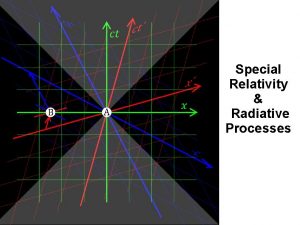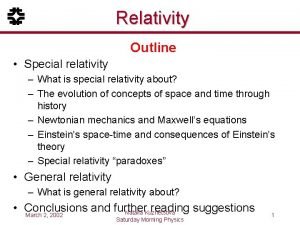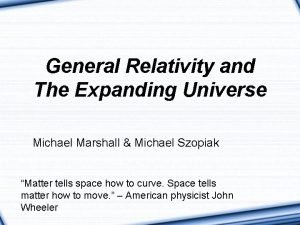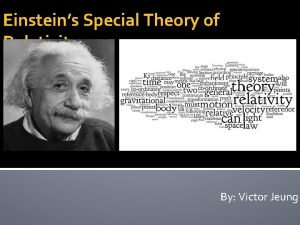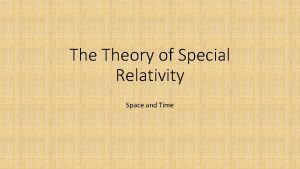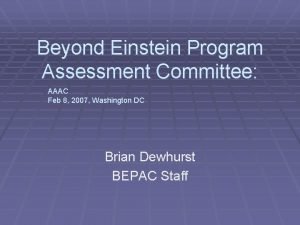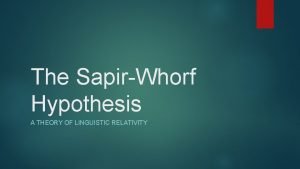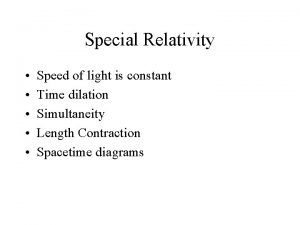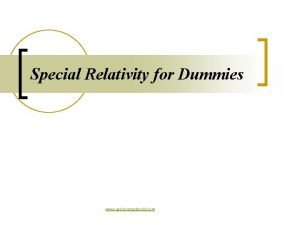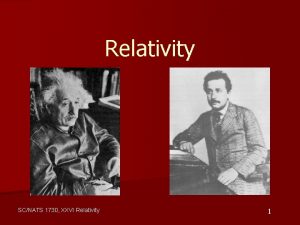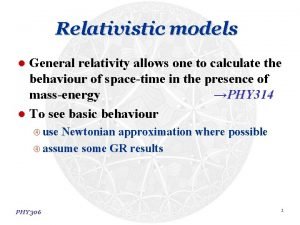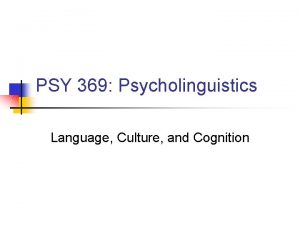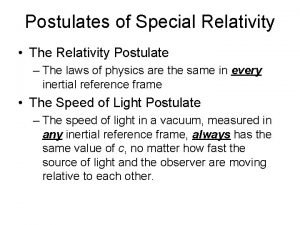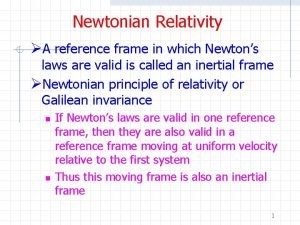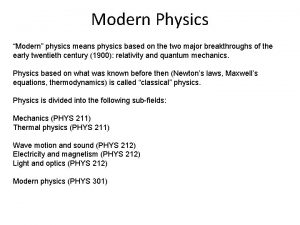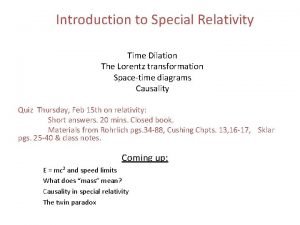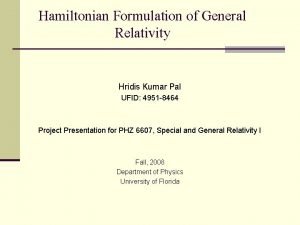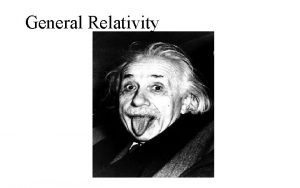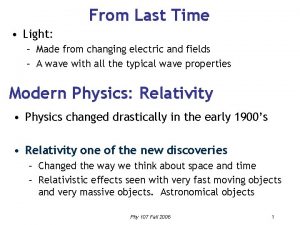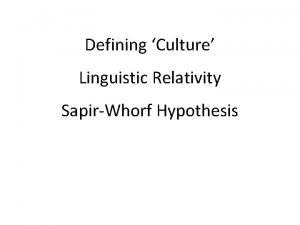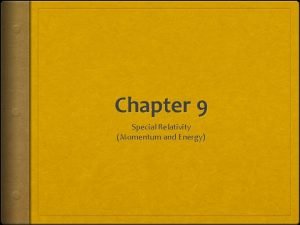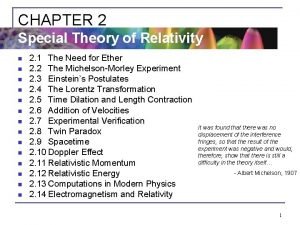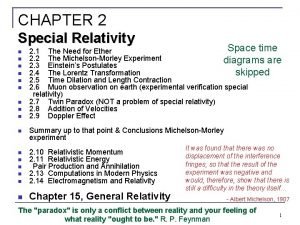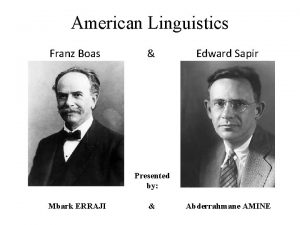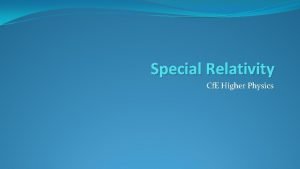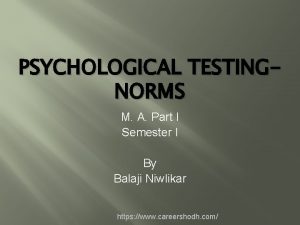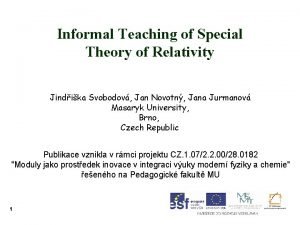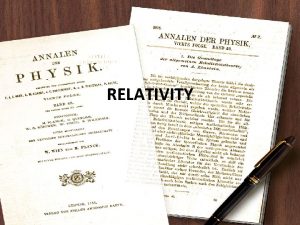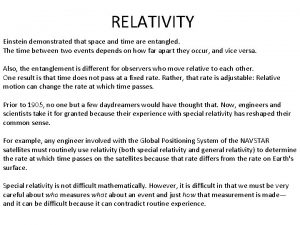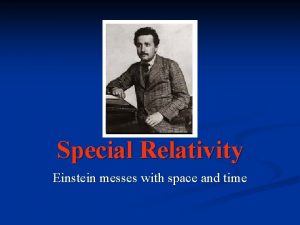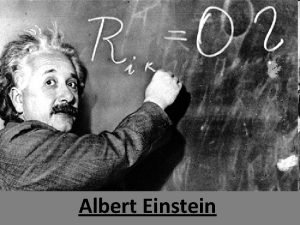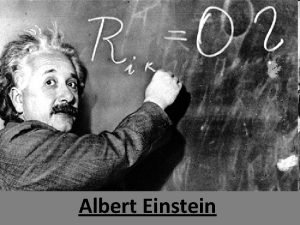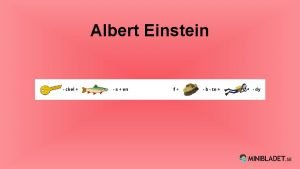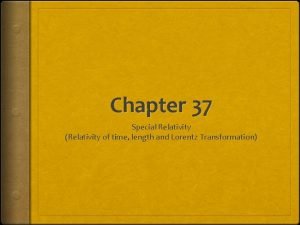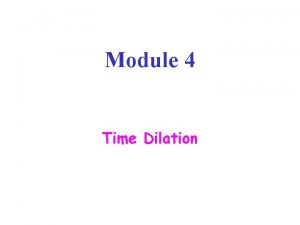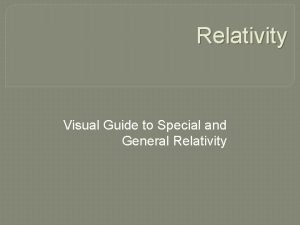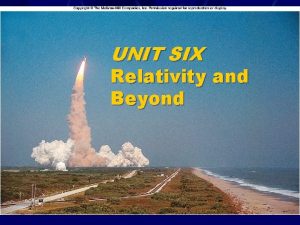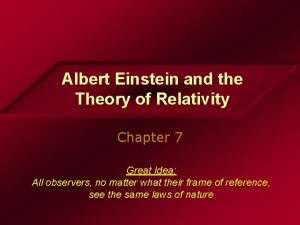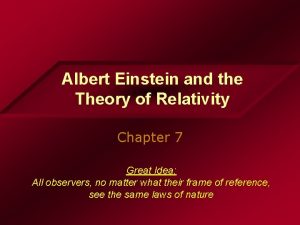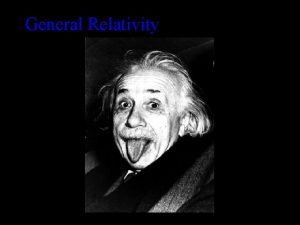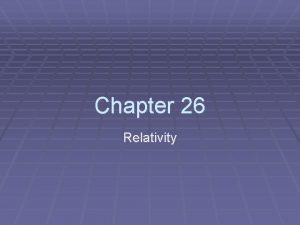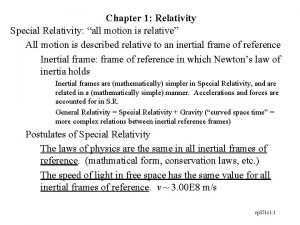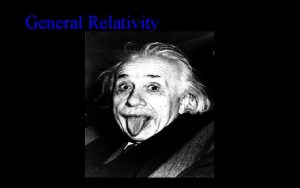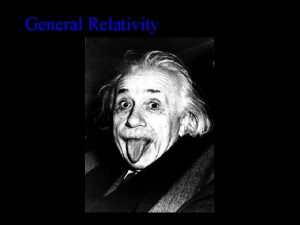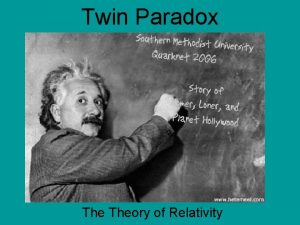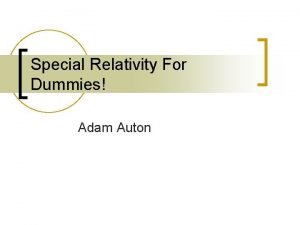Einstein and the relativity of space and time





























- Slides: 29

Einstein and the relativity of space and time Steve Manly Department of Physics and Astronomy University of Rochester

What is time? ?

Velocities add!! It’s common sense! 4 mi/hr Speed with respect to you is 4 mi/hr 2 mi/hr Speed with respect to you is 2 + 4 = 6 mi/hr

The speed of light is greater for beam I, beam II or beam III? II I Car moves while passenger shines a flashlight. V III Experiment says the speed of light is the same in all directions!!

Weird, huh? What does it mean for the real world? Enter our man Einstein!

Einstein thought experiment: Consider a beam of light that is emitted from the floor of a train that bounces off a mirror on the ceiling and returns to the point on the floor where it was emitted. v H

Fact: Light is emitted and detected at point A. This fact must be true no matter who makes the measurement!!!! v H A

Sam is on the train H Velocity of light = c c = distance/time c = 2 H/Tsam = 2 H/c Sam

Sally watches the train pass and makes the same measurement. v H sally Light is emitted

v H

Sally is standing still, so it takes two clocks. v H 1 2 sally Light is emitted Light returns

Sam Sally sees the light traveling further. If light travels at a constant speed, the same “event” must seem to take longer to Sally than Sam! Time is relative … not absolute!!

From Sally’s point of view Path light takes to mirror Path light takes from mirror to detector H Distance train travels while light is traveling = VTsally Makes use of Pythagorian theorem

From Sally’s point of view H c = distance/time = 2 D/Tsally = 2 D/c

Sam (on train) 2 H/Tsam = c Sally (on ground) c = 2 D/Tsally

Recall 2 H/Tsam = c or 2 H=c. Tsam

Sam (on train) 2 H/Tsam = c Sally (on ground) c = 2 D/Tsally A bit of algebra. This number is >1. It becomes larger as v approaches c.

Think about it! Sam and Sally measure the time interval for the same event. The ONLY difference between Sam and Sally is that one is moving with respect to the other. Yet, Tsally > Tsam The same event takes a different amount of time depending on your “reference frame”!! Time is not absolute! It is relative!

Can this be true? ? Experiment says YES! ground plane

Can this be true? ? Experiment says YES! ground plane

Less time elapsed on the clocks carried on the airplane ground plane

What is length? ?

Measure the length of a boxcar where you are on the car. V Measure the length of a boxcar moving by you.

Length is relative, too! Large V V=0

Lorentz transformations y Event at (x, y, z, t) x z

Lorentz transformations y' Event at (x', y', z', t') x' z'

Lorentz transformations y' y x' x z How are (x, y, z, t) related to (x', y', z', t')? z' v

The ladder paradox

Albert Einstein revolutionized our view of space, time and simultaneity. His ideas/theories about “relativity” have been experimentally verified again and are widely accepted as truth in as much as science can be truth. Ø atoms (Brownian motion) Ø quantum mechanics (photoelectric effect) Ø gravitation (general relativity).
 Special relativity vs general relativity
Special relativity vs general relativity General relativity vs special relativity
General relativity vs special relativity General relativity vs special relativity
General relativity vs special relativity 2 postulates of relativity
2 postulates of relativity Albert einstein theory of special relativity
Albert einstein theory of special relativity Time dilation theory of relativity
Time dilation theory of relativity Interstellar
Interstellar Einstein space
Einstein space Elapsed time
Elapsed time Sapir-whorf hypothesis definition
Sapir-whorf hypothesis definition Special relativity
Special relativity Relativity for dummies
Relativity for dummies Relativity definition
Relativity definition General relativity equation
General relativity equation Linguistic relativity hypothesis
Linguistic relativity hypothesis Relativity postulates
Relativity postulates Newtonian relativity
Newtonian relativity Document
Document Law of relativity
Law of relativity Hridis pal
Hridis pal Principle of equivalence
Principle of equivalence Galilean relativity
Galilean relativity Principle of linguistic relativity
Principle of linguistic relativity Momentum special relativity
Momentum special relativity Lorentz transformation equation
Lorentz transformation equation Kinetic energy of a relativistic particle
Kinetic energy of a relativistic particle Boas linguistics
Boas linguistics Special relativity higher physics
Special relativity higher physics Relativity of norms
Relativity of norms Theory of relativity cartoon
Theory of relativity cartoon
